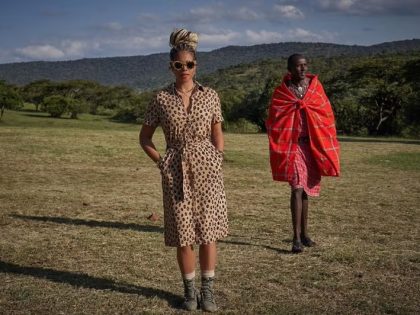Is this Nollywood?
A lot of people, not just Nigerians or its media, are pleased with white South African photographer Pieter Hugo's portrayal of Nollywood.

Mummy Ahmadu and a snake charmer with a rock python, Abuja, 2005 – 2007. From the series "The Hyena & Other Men," by Pieter Hugo.
With few exceptions, I usually celebrate South African photographers. Among them is Pieter Hugo, whose most recent work, “Nollywood”– a series of portraits recreating what for Hugo represents “archetypical characters” from the southern Nigerian film industry–opens tonight (from 6:00 to 8:00 pm) at Yossi Milo Gallery in Manhattan (525 West 25th Street). Anyway, not everyone is as pleased with Hugo’s portrayal of Nollywood.
I received this email last week:
‘… I thought it [is] all [the] way off. Not in a white/black or outsider/insider way, but just off: I don’t get the feeling that Pieter [has] seen or read a single Nollywood thing. As someone who has seen, oh, a 100 of these films (which is admittedly 98 too many), I thought: (a) there are things to appreciate and things not to, and [he does not] seem to get that, (b) what’s the deal with the freaks ‘n fatties theme? particularly seeing as it is completely absent in the films themselves, (c) it’s just a strange, strange perspective on nollywood, in a really un-nice way. I guess I sound like I’m ranting unnecessarily, but it annoyed me that [he’s] being celebrated mildly when in fact it seemed as if [he] should be mildly ignored.’
What do you think?



















